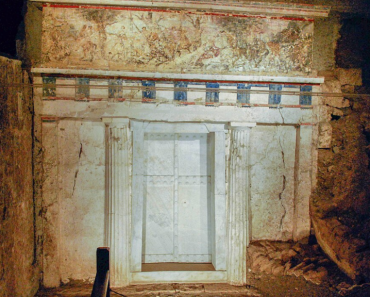A History of Brain Plasticity Research
Even though the terms brain plasticity and neuroplasticity are associated with late 20th- and now 21st-century scientific and medical thinking, the concept of brain plasticity has been known (although not widely discussed in the literature) for at least 200 years (Arrowsmith-Young, 2012).
For example, in 1783, the Italian anatomist Michele Vincenzo Malacarne set out to examine the impact of forced physical activity on the brains of birds and dogs, compared with the brains of non-exercising birds and dogs. Following an unspecified period of forced exercise, the animals were euthanized, and a dissection of each brain was performed. From this, Malacarne found that the brains of the exercising bird and dog were larger and thicker than those of the non-exercising bird and dog (Arrowsmith-Young, 2012).
This result indicated to Malacarne that exercise had somehow changed the brain of these animals. However, this research by Malacarne did not alter the established 18th-century medical and social dogma, which continued to profess that the brain was fixed from birth (Arrowsmith-Young, 2012).
Nearly 120 years before this, in 1666, Robert Hooke, an astronomer, chemist, physicist, mathematician, physiologist, and architect of the College of Physicians and Bedlam Hospital of London, made a discovery, and with this discovery and its subsequent naming, a new descriptor entered the field of science, medicine, and the social lexicon (Arrowsmith-Young, 2012; Peters, 2024)
Discovering, Identifying, and Naming the “Cell”
Hooke has been credited as being the first to see an unknown and unnamed “micro” entity, which he named a “cell.” Following the Great Fire of London in 1666, Hooke “was one of … two men appointed to survey the charred remains of London” (Goss, 1937, p. 127).
As he explored the devastation, Hooke’s interest was aroused by an intact cork he found amongst the blackened ruins of London. Hooke picked up the cork and took it home. Upon his return home, Hooke sliced a thin layer from the cork. He then placed this layer under a microscope.
Hooke reported that he was astounded by what he found. He discovered that the cork’s physical manifestation of strength and lightness came about as a result of its being made up of honeycomb-like structures. Hooke found that these structures were separated by micro-thin walls (Arrowsmith-Young, 2012; Goss, 1937; Peters, 2024).
It was these structures that Hooke referred to as boxes and cells. Of these descriptors, Hooke chose the term cell. Thus, the term “cell” became the defining classification for any microscopic shape that had an external “wall” or “barrier,” or membrane surrounding an internal space. Hooke published his “cork findings” in Micrographia (Arrowsmith-Young, 2012; Goss, 1937; Peters, 2024).
A significant research leap to Hooke’s initial discovery took place in 1839 when Theodor Schwann (who was expanding on the 1838 work of Matthias Jakob Schleiden) proposed the idea that the tissues of all organisms were composed of cells (Goss, 1937; Rosenzweig, 2007).
However, perhaps the best example of using the term “cell” as a descriptor arose from the work of Rudolf Virchow, a German medical practitioner and researcher who had a special interest in cell pathology. This research by Virchow led to the 1855 publication in which “he published his now famous aphorism’ omnis cellula e cellula’ (‘every cell stems from another cell’)” (Schultz, 2008, p. 1480).
This maxim was based on Virchow’s research into cell pathologies, which led him to argue that all holistic presenting diseases involved “changes in normal cells” and, therefore, according to Virchow, all pathologies were a direct result of “cellular pathology” (Schultz, 2008, p. 1480).
This result led to a significant shift in medicine, including a change in how consulting medicine was thereafter practiced. Doctors began to describe illnesses beyond what was then the practice of generalizing illnesses into broad groups of symptoms (Barbara & Clarac, 2011; Schultz, 2008).
From the work of Virchow, doctors began to focus more on observed anatomical changes. It was this focus on anatomical changes that led to the situation where illnesses were now being identified far more accurately than before the cellular understanding presented by Virchow, which ultimately came to be accepted by the broader medical fraternity (Barbara & Clarac, 2011; Schultz, 2008).
Neuroplasticity Essential Reads
The Egyptians, Greeks, Romans, the Dark Ages, and Beyond
The 19th century was witness to a wide variety of research, inventions, engineering feats, experiments, and social changes taking place. This included brain-related research, with the major interest at that time focusing on learning and memory. This interest in the connection between the brain and memory can be traced back to ancient Egypt, through the Golden Age of Greece, and also to the time of Imperial Rome. This interest in the brain and memory also continued through what is referred to as the Dark Ages, and from there, fortunately for us all, this interest in the brain, the mind, consciousness, learning and memory has carried on to the present day (Barbara, & Clarac, 2011; Crivellato, E., & Ribatti, D., 2007; Wickens, A. P., 2014).
In 1836, a significant advance in brain anatomy took place when Robert Remak, the Polish-German neurologist, physiologist, and embryologist, produced his doctoral thesis in Latin in which he presented what is believed to be the first drawings of glial structures in the brain (Barbara & Clarac, 2011; Schultz, 2008).
During this same year, 1836, in another publication, Remak presented another paper, this time in German. In his paper, Remak reported on the discovery of different types of axons. Remak then went on to describe the differences between myelinated and unmyelinated axons (Barbara & Clarac, 2011; Schultz, 2008). This overall development and search for knowledge eventually led to the discovery and naming of glia. However, there is confusion regarding when the discovery and naming of what is now known and referred to as glia took place.







